

EXPLORE BY TOPIC:
  Our top 10 resources
Our top 10 resources
  Childhood / Early Life
Childhood / Early Life
  Chronic Stress
Chronic Stress
  Education
Education
  Food Security
Food Security
  Genetics
Genetics
  Jobs & Work
Jobs & Work
  Housing / Neighborhoods
Housing / Neighborhoods
  Income & Wealth
Income & Wealth
  Race / Racism
Race / Racism
  Social Inclusion
Social Inclusion
  Policy & Change
Policy & Change





Buy the DVD
e-Newsletter
FAQs
Contact Us
Site Map
Home

|
 |


|
Background: More than 100 studies now link racism to worse health. Many people of color experience a wide range of serious health issues at higher rates than do whites, including breast cancer, heart disease, stroke, diabetes, hypertension, respiratory illness and pain-related problems. On average, African Americans, Native Americans, Pacific Islanders and some Asian American groups live shorter lives and have poorer health outcomes than whites. But why?
According to the Centers for Disease Control, African American men die on average 5.1 years sooner than white men (69.6 vs. 75.7 years), while African American women die 4.3 years sooner than white women (76.5 vs. 80.8 years). Vietnamese American and Korean American women suffer some of the highest rates of cervical cancer in the nation; Vietnamese American men die from liver cancer at a rate seven times that of non-Hispanic white men.
Class certainly plays a role. Because of historical discrimination and structural racism, people of color are likely to be less wealthy, to have less education and to live in segregated communities with underfunded schools, insufficient services, poor transportation and housing, and higher levels of exposure to toxic and environmental hazards. A wide body of evidence has shown that wealth predicts health: the higher you are on the class pyramid, the better your health. Every step down corresponds to slightly worse health, from top to bottom. Inequitable distribution of resources helps explain why.
Yet socioeconomic status doesn't account for the whole picture. In many instances, African Americans and other groups fare worse than whites at the same income levels. In fact, infant mortality rates among babies born to college-educated African American women are higher than those of white Americans who haven't finished high school. Recent Latino immigrants, though typically poorer, are healthier than the average American; yet the longer they're here, the more their relative health status declines even as their socioeconomic situation improves. Racism has proven to be a factor affecting health "upstream" and independent of class.
Could there be a genetic reason? Researchers funded by the National Institutes of Health, for example, have spent 40 years and several millions of dollars studying Native Americans in southern Arizona, trying to discover a biological reason for their high rates of Type 2 diabetes. Yet their findings remain inconclusive. Hypotheses like the "salt retention gene" explanation for high rates of hypertension among African Americans have also long been debunked scientifically, although they continue to hold currency in the popular press and public imagination.
In fact, studies comparing birth outcomes among white and Black American women showed that more low birth-weight babies are born to African Americans, but birth outcomes among white Americans and African-born immigrants to America were comparable. Moreover, the daughters of the African immigrants gave birth to low birth-weight babies at the same rate as African Americans.
One risk factor researchers are investigating is how the lived experience of racism can increase chronic stress levels and thus worse health among people of color. According to their thinking, addressing unequal birth outcomes, for example, requires more than just better prenatal care; it also requires that we change the social conditions that produce negative experiences over a lifetime. African Americans have among the worst hypertension rates not because of their genes but because of difficulties they face in their lives.
As sociologist Troy Duster explains, the impact of race on disease is not biological in origin but in effect. Anxiety, anger, or frustration from racist experiences trigger the body's stress response, which over time, creates wear and tear on the body's organs and systems. Dr. Camara Jones, a leading expert on racism and health at the Centers for Disease Control, puts it this way: "It's like gunning the engine of a car, without ever letting up. Just wearing it out, wearing it out without rest. And I think that the stresses of everyday racism are doing that." Dr. Jones and others are studying three kinds of racism - institutional, interpersonal and internalized - and how each contributes to health.
Whether it takes the form of overt discrimination or structural disadvantage, racism continues to influence how people are treated, what resources and jobs are available, where we are likely to live, how we perceive the world and our place in it, what environmental exposures we face, and what chances we have to reach our full potential. Important policies to address racism and its impact on health include more equitable school funding, better enforcement of anti-discrimination laws, housing mobility programs, better transportation, affirmative action, tax policy and land use, as well as economic revitalization, business investment and wealth accumulation in communities of color.

|
|
|
| |
|
Race / Racism: 0 items found |
 The Biology of Disadvantage: Socioeconomic Status and Health The Biology of Disadvantage: Socioeconomic Status and Health 
JOURNAL Nancy E. Adler and Judith Stewart, eds. Annals of the New York Academy of Science How does socioeconomic status get under the skin? This book summarizes the decade of research by the MacArthur Foundation Research Network on Socioeconomic Status and Health “exploring the pathways and mechanisms that contribute to the gradient relationship between socioeconomic status and health.”
PDFs of each article are available online. You may also purchase a complete copy of the journal.
|
 |
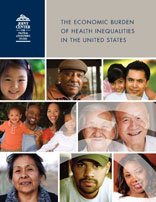 The Economic Burden of Health Inequalities in the United States The Economic Burden of Health Inequalities in the United States 
This study, commissioned by the Joint Center for Political and Economic Studies and carried out by leading researchers from Johns Hopkins University and the University of Maryland, provides important insight into how much of a financial burden racial disparities are putting on our health care system and society at large. The researchers examined the direct costs associated with the provision of care to a sicker and more disadvantaged population, as well as the indirect costs of health inequities such as lost productivity, lost wages, absenteeism, family leave, and premature death. |
 |
 The Fall and Rise of US Inequities in Premature Mortality: 1960-2002. The Fall and Rise of US Inequities in Premature Mortality: 1960-2002. 
SCHOLARLY ARTICLE by Nancy Krieger, et al., PLoS Medicine, 2008 Between 1966 and 1980, socioeconomic inequities in premature mortality and infant death shrank, absolutely and relatively, especially for US populations of color. However, starting in 1980, the relative gaps widened and the absolute gaps remained unchanged. |
 |
 The Misuse of Race in Medical Diagnosis The Misuse of Race in Medical Diagnosis 
ARTICLE by Richard S. Garcia, MD, PEDIATRICS, May 2004 What are the consequences of making racial assumptions in the doctor's office? |
 |
 The Praxis Project The Praxis Project 
WEB SITE The Praxis Project is a national, nonprofit organization that builds partnerships with local groups to influence policymaking to address the underlying, systemic causes of community problems. Committed to closing the health gap facing communities of color, they forge alliances for building healthy communities. Praxis trains its partner organizations and provides research, technical assistance and financial support to tackle issues impacting the well being of communities. Their site contains an information resource center with additional resources and reports on equity and social justice. |
 |
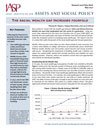 The Racial Wealth Gap Increases Four-Fold The Racial Wealth Gap Increases Four-Fold 
Thomas M. Shapiro, Tatjana Meschede,and Laura Sullivan Assessing the wealth holdings of the same families for 23 years (1984-2007) shows that the wealth gap between whites and African Americans increased more than 4 times, from $20,000 in 1984 to $95,000 in 2003. This gap persisted for African Americans and white families in the same income range. For example, middle-income white households had greater gains in financial assets than high-income African Americans; by 2007, they had accumulated $74,000, whereas the average high-income African American family owned only $18,000. At least 25% of all African American families had no assets to turn to in times of economic hardship. |
 |
 The Rise and Fall of Jim Crow The Rise and Fall of Jim Crow 
DOCUMENTARY distributed by California Newsreel, 2002 The first comprehensive look at race relations in America between the Civil War and the Civil Rights Movement, this definitive four-part series documents a brutal and oppressive era rooted in the growing refusal of many Southern states to grant slaves freed in the Civil War equal rights with whites. A life of crushing limitation for Southern Blacks, defined by legal segregation known as "Jim Crow" - after a minstrel routine in which whites painted their faces black - shaped the social, political and legal history of the period. In 1954, with the Supreme Court decision in Brown vs. Board of Education, the Jim Crow laws and way of life began to fall.
This film is part of the Structural Racism sub-category of California Newsreel's African American Perspectives Collection. |
 |
 The Road to Brown The Road to Brown 
DOCUMENTARY distributed by California Newsreel, 1990 The Road to Brown tells the story of the Brown v. Board of Education ruling as the culmination of a brilliant legal assault on segregation that launched the Civil Rights movement. It is also a moving and long overdue tribute to a visionary but little known black lawyer, Charles Hamilton Houston, "the man who killed Jim Crow."
This film is part of the Structural Racism sub-category of California Newsreel's African American Perspectives Collection. |
 |
 The Science and Epidemiology of Racism and Health in the United States: an Ecosocial Perspective The Science and Epidemiology of Racism and Health in the United States: an Ecosocial Perspective 
VIDEO PRESENTATION, Nancy Krieger, February 29, 2008
In her keynote lecture to the 29th Annual Minority Health Conference, Dr. Krieger explores how racism harms health and creates the very categories of "race." The idea that racial/ethnic health inequities are a biological expression of racism, that their origins lie in injustice, not biology, is not an ideological argument but a scientific statement that rests on rigorous scientific testing. Using ecosocial theory, Krieger explains the myriad ways racial inequality becomes biologically embodied over the lifecourse and across generations, through pathways including adverse exposure to: economic and social deprivation; toxic substances, pathogens, and hazardous conditions; social trauma; targeted marketing of harmful commodities; and inadequate and degrading medical care. In this presentation, Krieger discusses conceptual and methodological aspects of analyzing how racial and economic injustice produce health inequities, coupled with empirical examples drawn from her own research as a social epidemiologist. |
 |
 The Wealth Factor The Wealth Factor 
ARTICLE by Dalton Conley, New York University What difference does wealth make in terms of your life opportunities? Over recent years, magazines and newspapers have run a variety of articles that explore why middle-class Black children don't do as well in school as white children from families with similar socio-economic backgrounds. These "achievement gap" articles are based on studies that relate achievement to family incomes. But the findings from these studies, argues one researcher, are highly misleading--because they simply fail to factor in what may be the key determinant to socio-economic status: family wealth. |
 |
 Too Young to Die: Part 1, Life's Toll Too Young to Die: Part 1, Life's Toll 
NEWS ARTICLE, San Francisco Chronicle, October 2004 In Bayview-Hunters Point, the stress created by environmental problems, racism, poverty and crime may explain why so many babies die young. Infant mortality is twice as high here as in the rest of San Francisco.
|
 |
 Toxic Wastes and Race Revisited (pdf) Toxic Wastes and Race Revisited (pdf) 
REPORT by Benjamin A. Goldman and Laura J. Fitton, 1994 An update on the 1987 report on the racial and socioeconomic characteristics of communities with hazardous waste sites. Co-sponsored by Center for Policy Alternatives, NAACP, and United Church of Christ Commission for Racial Justice |
 |
 Traces of the Trade Traces of the Trade 
DOCUMENTARY distributed by California Newsreel, 2008 In this award-winning documentary, one family's painful but persistent confrontation with the continuing legacy of the slave trade becomes America's. Katrina Browne uncovers her New England family's deep involvement in the Triangle Trade and, in so doing, reveals the pivotal role slavery played in the growth of the whole American economy. In this bicentennial year of the federal abolition of the slave trade, this courageous documentary asks every American what we can and should do to repair the unacknowledged damage of our troubled past.
This film is part of the Structural Racism sub-category of California Newsreel's African American Perspectives Collection. |
 |
 Tulia, Texas Tulia, Texas 
DOCUMENTARY distributed by California Newsreel, 2008 Through its scrupulous investigation of a landmark case, this documentary uncovers the deep-rooted assumptions about race and crime that still permeate our society and undermine our justice system. The film convincingly shows how the 'war on drugs' has become a war on due process, waged against African Americans. Today America has the largest prison population in the world; in some states as much as 15 percent of the black male population is incarcerated. Tulia, Texas shows one reason why.
This film is part of the Structural Racism sub-category of California Newsreel's African American Perspectives Collection. |
 |
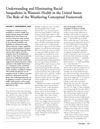 Understanding and Eliminating Racial Inequalities in Women's Health in the United States (pdf) Understanding and Eliminating Racial Inequalities in Women's Health in the United States (pdf) 
SCHOLARLY ARTICLE, Arline T. Geronimus, Journal of the American Medical Women's Association, 2001 Argues that "weathering" framework best describes complexities of inequality. Explains how this model suggests that African-American women experience early health deterioration as a consequence of the cumulative impact of repeater experience with social, economic, or political exclusion. This includes the physical cost of engaging actively to address structural barriers to achievement and well-being. |
 |
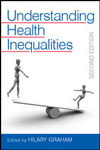 Understanding Health Inequalities Understanding Health Inequalities 
BOOK edited by Hilary Graham, 2nd ed. 2009 An accessible and engaging exploration of why the opportunity to live a long and healthy life remains profoundly unequal. Hilary Graham and her contributors outline the enduring link between people's socioeconomic circumstances and their health and tackle questions at the forefront of research and policy on health inequalities. |
 |
 Undoing Racism Action Group Undoing Racism Action Group 
WEB SITE The CityMatCH Undoing Racism Action Group strives to:
(1) Guide the organization through learning experiences to better understand institutional racism and how it manifests in the world around us;
(2) Identify barriers within and beyond the CityMatCH organization and create a safe environment to discuss the issue of racism openly and honestly; and
(3) Identify undoing racism strategy and training opportunities to benefit CityMatCH membership. |
 |
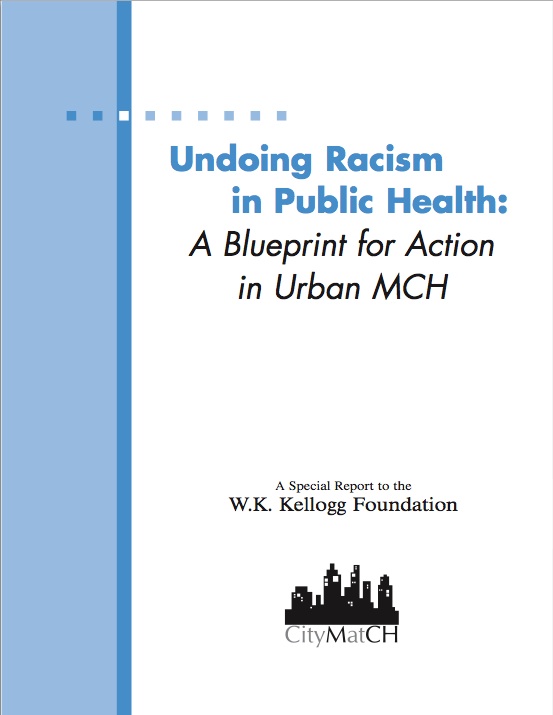 Undoing Racism in Public Health: A Blueprint for Action in Urban MCH Undoing Racism in Public Health: A Blueprint for Action in Urban MCH 
REPORT by CityMatCH, August 2004 Eliminating racial and ethnic disparities is a sustained, strategic priority in CityMatCH's work with nearly 150 member local health departments whose jurisdictions include the largest 200 cities and major metropolitan areas in the nation. This report aims to examine the scientific basis for racism as a determinant of health status and health disparities, and institutional racism manifests in health care and health departments; provide an overview of existing directions, options and resources for "Undoing Racism;" and outline a series of activities for a local public health-based Undoing Racism initiative, ranging from awareness to action. |
 |
 Undoing Racism: A Gardener's Tale Undoing Racism: A Gardener's Tale 
ARTICLE and VIDEO PRESENTATION by Camara Phyllis Jones In a 2002 videotaped interview for the CityMatCH Annual Urban MCH Leadership Conference, Dr. Jones shared a simple yet remarkably profound allegory she developed to help people come to a place of understanding about the many layers and nuances of institutionalized, personally-mediated, and internalized racism.
A family physician and epidemiologist by training, Dr. Jones' lifelong passion has been naming and addressing the impacts of racism on the health and wellbeing of the nation.
The page also include a link to her 2003 article using the same allegory, "Levels of Racism: A Theoretic Framework and a Gardener's Tale." |
 |
 Unequal health outcomes in the United States (PDF) Unequal health outcomes in the United States (PDF) 
REPORT from the CERD Working Group on Health and Environmental Health, 2008 This report to the U.N. Committee on the Elimination of Racial Discrimination makes clear that racial discrimination in health care access and treatment is a human rights violation that deserves serious attention from both the CERD Committee and policymakers in the United States. This report was written by a coalition of experts in the fields of health policy and environmental justice, including academics and members of civil society organizations working to advance the right to health and the right to a healthy environment in the United States |
 |
 Unfair Treatment Can Harm the Heart Unfair Treatment Can Harm the Heart 
NEWS ARTICLE, HealthDay News, May 2007 Researchers at University College London analyzed responses from a few thousand senior civil servants working for the British government in London, gathered over 11 years. The findings indicate that a nagging sense of being unfairly treated at work or at home can raise a person's risk of heart attack. The study was published in the British Medical Journal.
|
 |
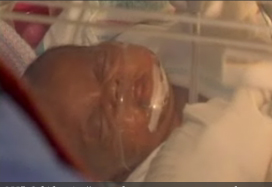 Unraveling the Mystery of Black-White Differences in Infant Mortality Unraveling the Mystery of Black-White Differences in Infant Mortality 
VIDEO EXCERPT, Unnatural Causes Neonatologists James Collins and Richard David specialize in the care of infants born too soon or too small. Their research on differences in birth outcomes between African American and white American women points to a provocative idea: the cumulative stress of racism is taking a toll on African American families even before they are born.
|
 |
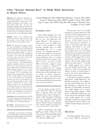 Using "Socially Assigned Race" to Probe White Advantages in Health Status Using "Socially Assigned Race" to Probe White Advantages in Health Status 
SCHOLARLY ARTICLE - Camara Phyllis Jones, et al., Ethnicity & Disease, Volume 18, 2008 Investigates the impacts of racism on health as documented by the health advantages of being perceived by others as "White," even if you self-identify with a non-White group. |
 |
 Water Rights and Diabetes in Arizona Water Rights and Diabetes in Arizona 
VIDEO EXCERPT, Unnatural Causes - Episode 4 The Tohono O'odham and Pima Indians of southern Arizona have perhaps the highest rate of diabetes in the world. Yet the disease was virtually unknown here 100 years ago. Over the last century, the diversion of river water to upstream white settlements cost the O'odham their crops, livelihood, traditional diet, culture and health. Today, community advocates hope that restoring water and renewing culture can help improve health. |
 |
 What If We Were Equal? A Comparison Of The Black-White Mortality Gap In 1960 And 2000 What If We Were Equal? A Comparison Of The Black-White Mortality Gap In 1960 And 2000 
SCHOLARLY ARTICLE by David Satcher, et al., Health Affairs, 2005 The United States has made progress in decreasing the black-white gap in civil rights, housing, education, and income since 1960, but health inequalities persist. We examined trends in black-white standardized mortality ratios (SMRs) for each age-sex group from 1960 to 2000. The black-white gap measured by SMR changed very little between 1960 and 2000 and actually worsened for infants and for African American men age thirty-five and older. In contrast, SMR improved in African American women. Using 2002 data, an estimated 83,570 excess deaths each year could be prevented in the United States if this black-white mortality gap could be eliminated. |
 |
| « Prev 1 | 2 | 3 | 4 | 5 | 6 | 7 Next » |
|




